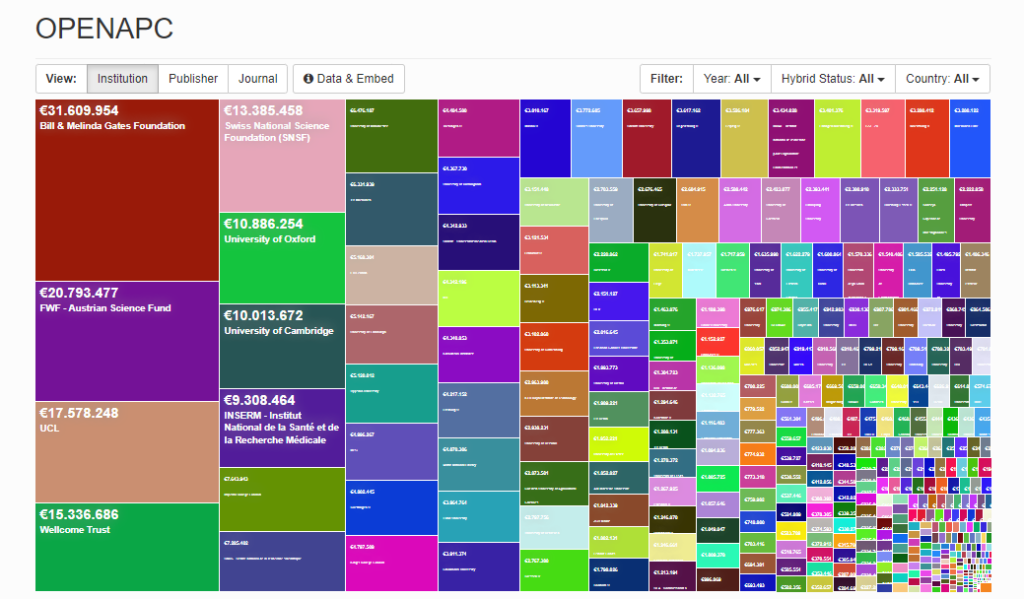
While open access publishing is gaining popularity in the United States, global developments in adopting open access policies and building infrastructure generally outpace the rate of developments in the United States. Of course, it is not a competition, and learning about open access publications and presses from all over the world will help contribute to a more thoroughly connected, diverse, and complete scholarly record. In recent decades, different organizations are working to consolidate different open access policies, publications statistics, and trends in one place or dashboard.

One of these is the Curtin Open Knowledge Initiative, which has compiled statistics on open access output by country and by institution. And while the United States has the highest quantity of open publications between 2000 and 2024 at 7,269,454, this represents only 44% of total domestic publications – while countries like Indonesia (1,487,632 total open access pubs) and Peru (97,881 open pubs) publish 91% and 82% open access, respectively. Dashboards and initiatives like these help to track progress – or comparative lack of progress, over the years as it relates to the actual publication of open materials. Studying the examples of countries that have quickly transitioned to producing a much higher percentage of open access publications is an important part of the work of open access advocates.

Another excellent tool for the tracking of open access projects is OpenAPC, which attempts to track where Article Processing Charges (APCs) are being paid from and which publishers are being paid. While the project does not have enough data from the United States institutions to suggest any sort of narrative domestically, many European (especially German) institutions have contributed data to the project – and the site is very useful at understanding all the differing pieces that make open access publishing work across the world.

The top funder of APCs in OpenAPC, rather unsurprisingly, is listed as the Bill and Melinda Gates Foundation. Having contributed over 31 million euro in APCs, the foundation alone has funded over 7% of all APCs on the site itself – and that is just what IS recorded by OpenAPC. The site also usefully tracks to increased prevalence of Transformative Agreements and expenditure on processing charges for open access monographs.
While the landscape around open access changes rapidly depending on the discipline, country, and institutional attitude, having a sense of what policies exist and what publications can supplement or compliment collections with low cost can help open access advocates and librarians fight for more equitable access for our students.